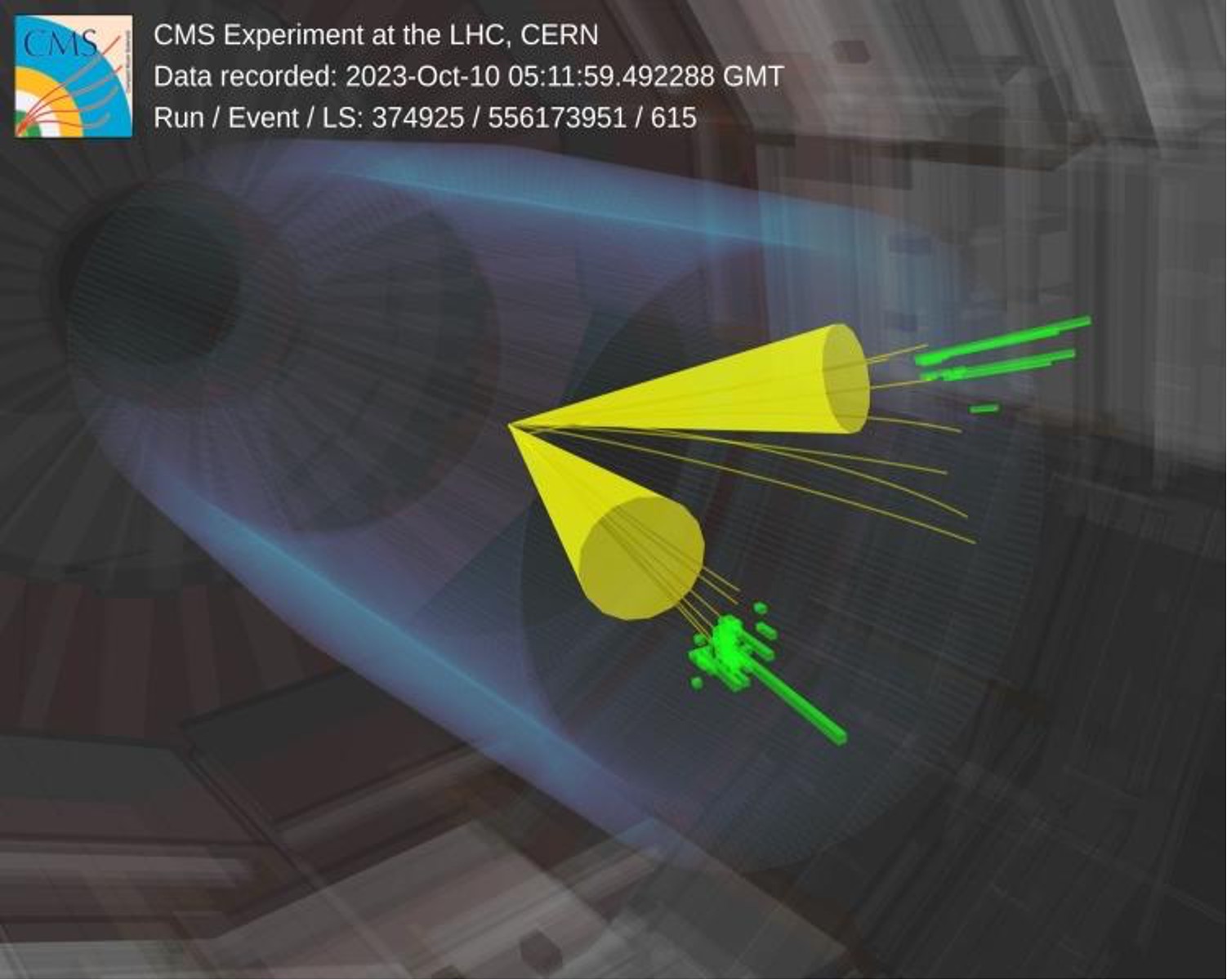
Event display of a candidate for D0 production at the CMS detector. (Image: CMS collaboration)
At the LHC, heavy ions are accelerated to extremely high energies, which creates strong electromagnetic fields. As a result, photons from the oncoming lead ion beams can interact with each other or with the nucleus, known as ultraperipheral collisions. Photon-nucleus scatterings at the highest energy achievable with existing particle accelerators are useful probes for physicists to investigate the structure of nuclei. While the common picture of nucleons is that they contain three quarks (up-up-down for protons and up-down-down for neutrons), in reality, a complex sea consisting of quark-antiquark pairs and gluons makes up a large fraction of the proton or neutron energies. Ultraperipheral collisions are an extraordinary tool to test the nature of nuclear matter.
The CMS experiment has recently released the first results using data from the first heavy ion run of LHC Run 3. The results measure the production of D0 mesons (containing a charm quark and up antiquark) and their antiparticles D0 bar mesons (made of an up quark and a charm antiquark) in ultraperipheral collisions for the first time. The D0 mesons are formed by charm quarks, which are kicked out from the nuclei by the photons and carry information about parton distribution functions - which describe how quarks and gluons behave inside nuclei.
To measure D0 production, the CMS detector first selects events where photon and lead nuclei collisions have caused the nucleus to break up. When this happens, neutrons freestream from the collision parallel to the beam, while protons and intact nuclei will follow a curved path due to their charge in the presence of the LHC's magnetic fields. Two calorimeters, at zero degrees to the beam located 140m away on either side of the interaction point, are able to detect such neutrons. If they are seen in one calorimeter and not the other, in a time window consistent with the collision, this event is selected for further investigation.
Then, the products of the D0 decay - oppositely charged kaon and pion pairs - are reconstructed in the CMS detector. Physicists consider all combinations of pion and kaon trajectories, with each track taking an assumed mass of the kaon and pion. Then, they filter these combinations using the data to identify tracks that match what they expect from a D0 meson. From this, they are able to measure the so-called production cross section, which is the rate at which D0 mesons are produced.
For CMS, the study of nuclear structure using D0 meson production is just one of many applications of ultraperipheral collisions. As methods are refined and systematic uncertainties are reduced, with time, this technique will be able to provide constraints on parton distribution functions, allowing physicists to understand the structure of nuclear matter more deeply.
The next heavy-ion run of LHC Run 3 will start at the beginning of November.






